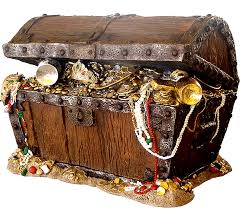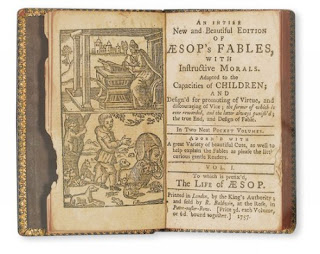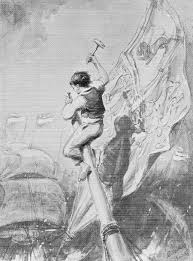A NSFW Look at Pirate Pin-Ups
Female pirates are sexy. It’s a fact, independent of
the fact that the number of documented female pirates is tiny, or that the ones
who are documented rarely have sexy stories. The concept of a female pirate
flames the male imagination. It always has, back to the origins of the Golden
Age of Piracy itself. We have proof.
The proof comes in the form of Johnson’s book The
Robberies and Murders of the Most Notorious Pyrates, first published in
1724. The book was popular at the time, but had only a normal print history.
Eventually it fell out of print, and the rights to the book were published by a
Dutch company.
These printers made one change in the book. They
replaced a historically accurate picture of Anne Bonny and Mary Read (in which
the two were wearing men’s clothes, and were fully covered, as per the
testimony of witnesses who had actually seen them) with a much more lurid
illustration of the two virtually naked from the waist up. This put the book
back on the best-sellers list, and it remains in print to this day.
Even the Victorian, best remembered as buttoned-up
prudes, loved them some female pirates. The illustrations of Victorian lady
pirates look staid to us – but to folks who found the sight of a female ankle inflammatory,
they were wild in the extreme.
Interestingly enough, we already see the two predominate
image of the female pirate – the pirate wench and the full-fledged female pirate
captain.
The pirate wench is AVAILABLE. She’s the saucy chick
who gets drunk with you, parties really hard, and wouldn’t mind going all the
way on a bar-side table. Pirate wenches in art often wear some version of
female clothing, often a short skirt or flowing blouse. A corset is almost
required, although some illustrations include only enough clothing to indicate the
woman in question is a pirate.
Pirate captains play to a different male fantasy.
A female captain is in control and the man who meets her is at her mercy. It doesn’t
matter at all that historic pirate captains didn’t have this kind of authority.
Illustrations of hot pirate captains are about the fantasy.
Female pirate captains may be scantily dressed,
but they always show their confidence and power. They are often shown as
heavily armed, and often carry whips. Sometimes the imaged of the violent
female captain can run out of control, as in this pulp-era book cover.
Pirate captains may wear corsets, but often show a
bare midriff instead. Interestingly enough, they often also sport gloves. Why?
I’m not sure, but perhaps it means nothing more than that men find gloves sexy.
Women often also identify with the female pirate
captain. They often imagine themselves as this fearless leader, doing as they
like without regard to law or propriety. Another attractive feature about the
sexy female pirate – she’s often of luxurious proportions.
While skinny girls
and waif types are sometimes seen, it’s much more common for a pirate to be all
woman in the truest sense of the word.
In fact, the hallmark of the sexy female pirate is
strength. And while, like any fantasy image, pictures of female pirates can be labeled
as “objectifying” or “setting impossible standards” they also speak to independence,
physical strength and daring-do.
Not bad for a pin-up!













































